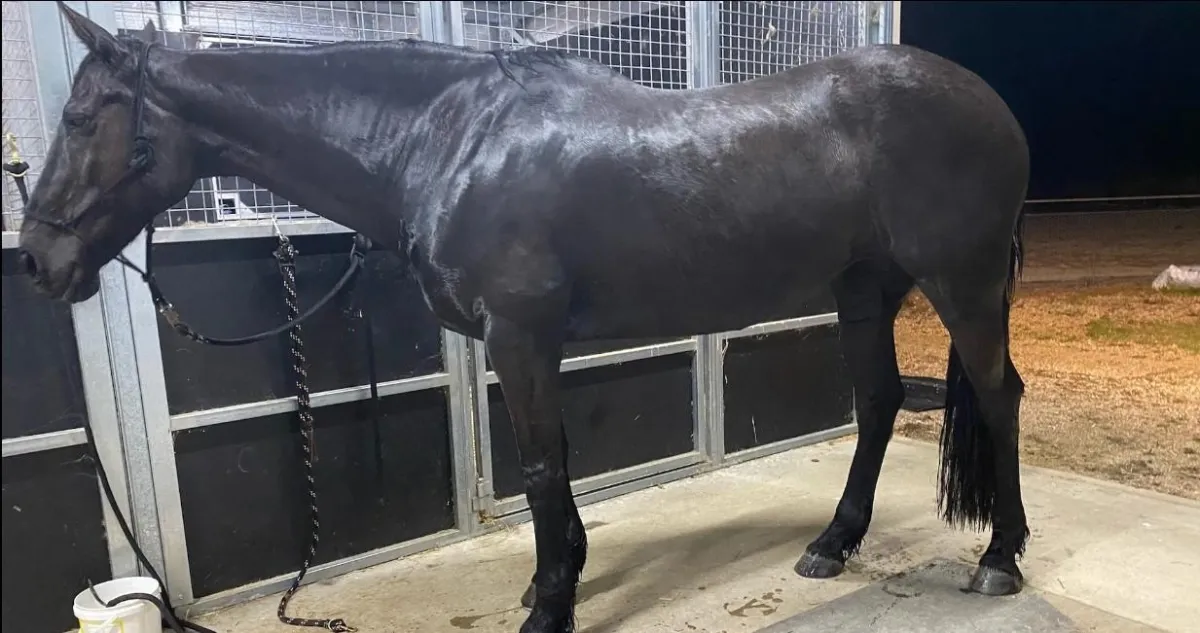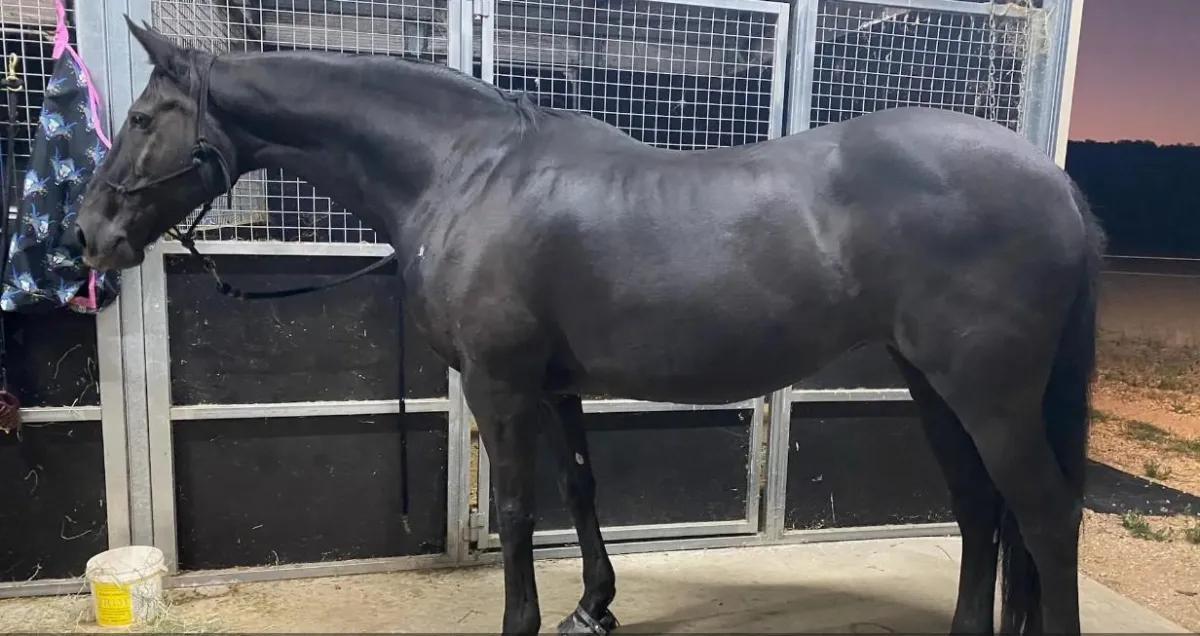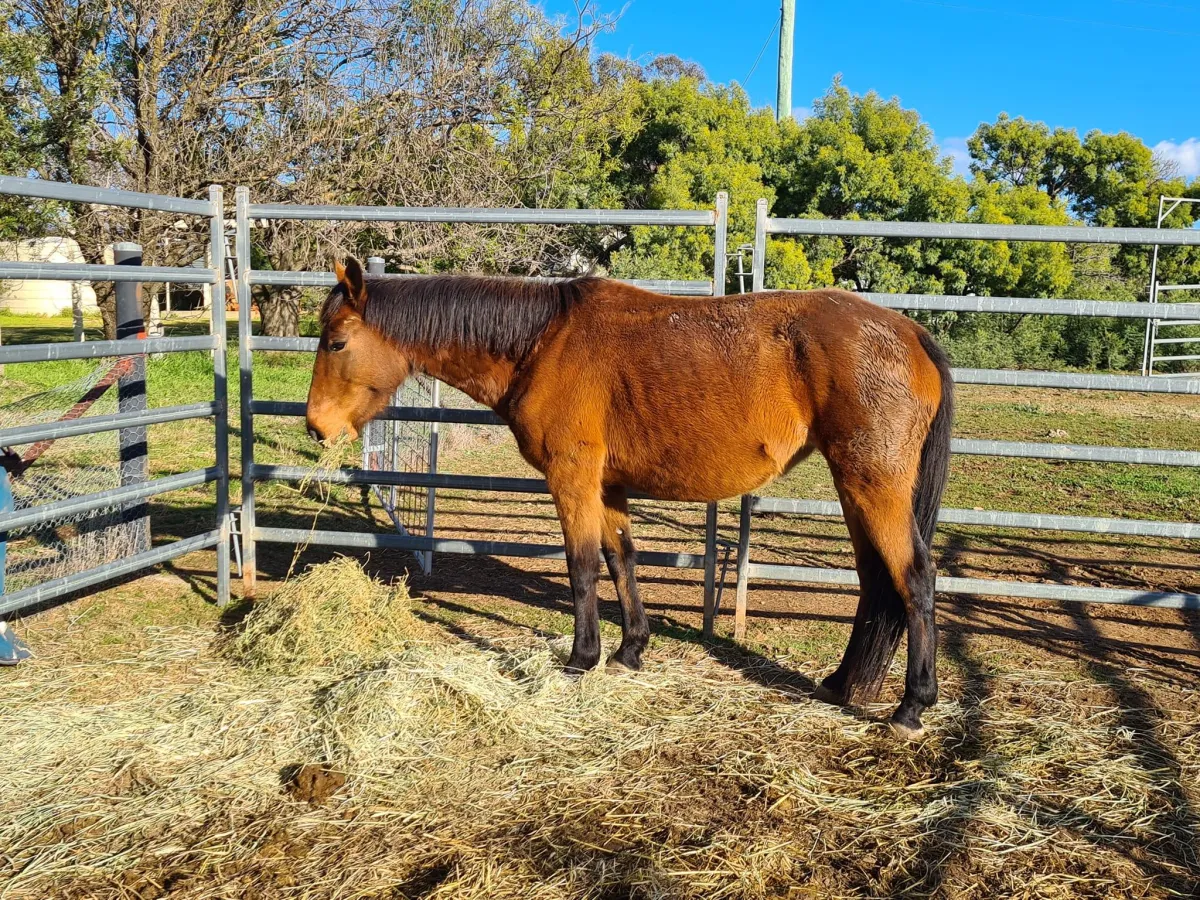Electra

October 2022

March 2023
19yo. Friesian x TB Mare
Electra's history
Electra is an Ex- show jumper, purchased by her owner Jan 2018. At the time of purchase the vet check picked up a slight lameness, which was assumed to be a strained muscle, prognosis was good and the lameness went away shortly after the vet check.
Upon arrival at her new home, Sandra (Electra's owner) described her as " stiff and hard to turn", it was noted that her saddle would always slip to the left, with work this improved somewhat.
In late 2019, Sandra injured her knee and Electra was turned out until December 2020.
Not long after returning to work, Sandra says
"It became apparent she wasn’t happy after she uncharacteristically bucked me off." Upon investigation, "The chiropractor confirmed she had a twisted pelvis which had caused a lot of other muscular and skeletal issues as well."
A series of incorrect hoof trims in early 2021 Electra became extremely lame. Working together with the vet and a hoof care professional Electra spent the next 3 months in casts. During this time she developed/ was diagnosed with high insulin and low grade laminitis.
Electra's diet was adjusted and she was put on medication to control her insulin levels.
I met Electra around October 2022, and started her rehabilitation in-hand. At this time she was shod in heartbar wedges.
In December 2022 Electra the after discussion with her owner we decided to transition her to barefoot to decrease concussion and allow her feet to function in a more natural and healthy way.
It was also discovered Electra had tearing of her pectoral muscles and a lot of scarring in that area, likely from her early days showjumping and an undesirable conformation to do so.
With regular in-hand sessions (3/4 times a week for around 15 mins) Slowly by slowly Electra became stronger, sounder and more content within her body. Over time I began short bareback rides in walk and trot, due to damage of the brachial plexus, Electra is ridden bareback to ensure their is no girth pressure interfering with her healing.
Electra continued to flourish and in early 2024 I handed the reins back over to her owner Sandra for them to enjoy Electra's remaining years together.
PIP

March 2024

December 2024
12yo Andalusian Mare
PIP's history
When I started working with Pip one of the first things I noticed was a slight roach over her lumbar and a few small muscle tares that were easy to palpate when feeling her pecs. Her psoas and her hamstring also very tight.
When watching Pip in movement (particularly trot) I noticed she was struggling to engage her suspension system, as she took a step with her left front and right hind she would bend laterally to the right, throwing her left fore out to the left and throwing her right hind to the right. Instead of stepping "through" on 2 tracks she would twist into 3 tracks (left fore on one track, right fore and left hind on a track together and right hind on a track). When Pip took a step with her right fore and left hind the opposite would happen, she would bend laterally to the left, throwing her right fore out to the right and her left hind to the left. Watching this pattern of movement in trot it almost appeared like Pip was waddling like a duck.
The reason Pip did this was because she found it really difficult to lift through her chest, the base of her neck (c6/c7) into the start of her thoracic (T1/T2) was not being stabilised or supported well by surrounding muscles, ligaments and tendons. Therefore the only other place in which the body can stabilise the horses ribcage is around the SI and Lumbar Sacral region. Due to compensating for lack of thoracic sling engagement Pips lumbar, SI, lumbar Sacral joint were working overtime as are supporting structures. The roach in Pips back had developed as a result, trying to stabilise the body to the best of its ability.
Even though the way she was moving was not functional movement nor was it sustainable, I think it incredible the compensatory patterns our horses can adopt to be able to move around.
Upon xray around 6-8 weeks into her rehabiliation we also noted that there was evidence that her spinious processes had been touching together.
Most of Pip rehabiliation was in-hand, working on her adopting a better posture and self carriage. As her body gained strength, I also noted her personality really started to shine through. Initially a sweet yet reserved mare she started to show much more confidence.
Around 3.5 months into working with her I felt she was strong enough to slowly start introducing ridden work again. Initially our rides were bareback and very brief. As time went we started working in a saddle and also introducing the laterals in which she had learnt already in-hand. Watching a horse change not only physically but emotionally and mentally is rewarding in itself. However the best part was Pip being able to return home to her owner after 5 months with me, and for them to be able to continue this learning journey together.
Nova

June 2024

November 2024
8yo Kosciusko Brumby Mare
Nova's history
Nova came to me as a part of the 2024 Australian Brumby Challenge. I made the decision to take part in this challenge to share with others a different approach to training a wild horse, or any horse for that matter. An approach which was focused on the horse's wellbeing physically, mentally and emotionally.
The Australian Brumby Challenge was an 150-day challenge, where 12 trainers were allocated a wild brumby each to work with and record their progress over the 150 days before they presented their horses at Equitana 2024.
From the very beginning of the challenge, I had no intention of having Nova as a ridden horse by Equitana. In my opinion 150 days is not long enough to be able to take her from a wild to a horse who was physically, mentally and emotionally ready to perform in such a big environment without it setting her back in the future.
In June 2024 I made the drive to the VBA in Victoria with a stock trailer to pickup Nova.
The trip was around 10 hours home, I loaded Nova on the trailer with the help of the VBA crew and set off on our journey home. I could tell Nova was stressed and a little upset to leave her friends, considering she travelled well and we arrived home late that night.
I unloaded Nova into a safe yard made from cattle panels, she spent a couple of weeks in this yard while she settled into her new home.
In the beginning I asked nothing of Nova, my main focus was to allow her time to settle in. To build confidence, grow a familiarity with me and her new home and to develop a curiosity to explore new things. I would often sit in her yard and read a book while she ate her hay.
I tried to make her feel as safe as possible, allowing her plenty of time to herself with adlib hay and fresh water, friends close by and no hard feed in the beginning. I knew if I made too many changes at once her nervous system would go into overdrive.
Over the next few weeks Nova grew more confident in her interactions with me. She began taking hay from my hand, then eating chaff from my hands- which led to our first touch (on her muzzle).
As she became more confident with the feel of my hand against her skin I slowly started to move my hand higher up on her face, then on her neck, then further back on her body.
As Nova grew confident with touch I was able to gently introduce the headstall. Our first haltering and leading very uneventful as she was already confident with touch and showed curiosity in following me around.
After a few weeks I let Nova out in the paddock with my mare, Honey.
Over the next couple of months, I allowed Nova a lot of time to just "be". When I felt she was engaged and ready for new things I would work with her, some days I would bring her out and give her a brush, somedays work on picking up her feet (which led to me being able to trim them), someday work with very basic in-hand work and other days just hang out with her in the paddock.
Once Nova was confident in floating we visited the vet to have her teeth done she also had xrays taken.
The xrays revealing what appeared to be an old fracture of C1 as well as various arthritic changes to multiple Cervical vertebrae. There were also arthritic changes present on some of the spinious processes of the lumbar.
The old fracture of C1, combined with arthritic changes got me thinking of the association between the xray findings and Nova's movement pattern when turning her head. One thing I had noticed about Nova is that when she turned her head there was a resistance there. Instead of simply turning her head she made a funny rotation of the atlanto-occipital joint then pushed the base of her neck into the opposite shoulder. It never ceases to amaze me the compensatory patterns of movement in which living beings develop in order to be able to achieve a certain movement. I also wonder if the old fracture of C1 has corresponding damage to the head obliques.
Combined with the xray findings also noted various old scars present on her body. All of which would have a story to tell of her past. Whilst these findings didn't mean Nova couldn't have a long and happy life, I feel they were important findings that needed to be kept in mind when observing her behaviours both in the paddock and when working with me.
November came around in no time at all, I made the decision at Equitana to pull Nova out of the brumby challenge. I felt participating in the challenge would cause her un-neccassary stress (as she was unable to have Honey, my mare in close proximity and was stressed without her.) I also felt that participating in the challenge wasn't going to be beneficial in sharing her story.
Nova, Honey and I, did however, present an education session at Equitana, sharing our journey together and the importance and reasoning behind taking things slow.
At the beginning of 2025 Nova found a beautiful home with a elderly friend of mine and his Tb gelding. I thought being a ridden horse would not be in her best interest. So she is enjoying a life grazing in good company and getting fed many carrots and apples.
The changes in Nova which may be seen in the photos above are mostly a result of allowing her to feel safe, good nutrition, bodywork and basic in-hand work.
